Further on Convex Edges
Recent › Forums › Main Forum › Techniques and Sharpening Strategies › Further on Convex Edges
- This topic has 34 replies, 8 voices, and was last updated 04/02/2012 at 12:07 pm by
Leo James Mitchell.
-
AuthorPosts
-
01/24/2012 at 7:39 am #1434
Since the more obtuse angle is the final cutting edge, why not start with that angle and convex from that point?
Example; 20 deg cutting edge taken to burr, then just a few strokes each of say 18,16,14 being careful NOT to take them to burr.
Less metal removed, and much faster.
Why remove the edge you just put on?
The only trade off I see would be maybe slightly less precise. (appearance, not performance)
If you start with the lower angle 14 to burr then progress to burr up to 20 you are removing more of the metal and work you just performed.Correct me if I’m missing something or read it wrong.
Glen
The only thing I see might be the lesser of evils is that with Clay’s method – 17 to bur and through stones, then 20 to bur, then a bit of work on 19 and 18, – you then have 2 definitive set angles, your 17 and 20, with 19 and 18 worked just to round it out.
I gues either way you get a similar edge.
01/24/2012 at 6:57 pm #1435I still don’t understand your pragmatism, Leo, but I’m very glad we’re still friends!
Zig – I think either approach will work – from the lower angle up , or higher angle down.
The one thing that may interfere with the finished edge is some “brushing” of the edge from the leather paddles, which may round the edge of the edge, making it lose some of its total sharpness. So in this light, I would recommend finishing at the highest angle with several, very light alternating strokes.
01/24/2012 at 8:31 pm #1436To the end my molecule polishing friend, to the end!
Leo
01/25/2012 at 4:34 am #1439After creating the convex edge how do you maintain the edge? Touching up all angles or just the edge? Or anything in between? Hope this isn’t too dumb a question!
01/25/2012 at 5:13 am #1440Not a dumb question at all! All I use is a strop with Green and Black compound, one on either side and then softly strop away. I have found that soft brushing, especially soft like a pleasant breeze brushing your cheek done with each face of the strop and that is sufficient. My edges respond very well to this.
You could use the WEPS strops, but I have never asked Clay what to set them at angle-wise knowing the angles used. In my case of 16,18 and 20, I suspect 16 degrees would be correct but I am not engineer or mathematician enough to know for sure.Leo
01/25/2012 at 5:43 am #1441Thanks Leo for your response and just to be sure I understand you correctly you are saying that you hand strop for maintenance. However, if you wanted to use the WEPS then would most likely only strop the 16 degree bevel.
01/25/2012 at 6:44 am #1442Yes I hand strop…it is something I feel comfortable with, it is fast to use in my congested home and it keep the convex edges super sharp in a trice.
The strops of the WEPS would be even better I suspect if one used the progressively finer pastes available, but we must check with Clay or Tom of Jende Industries to verify what would be the correct angle setting…I suspect 16 degrees in the example I gave but that needs to be verified by one of our experts. Until then I will use the hand strop, anyway it is an old friend of mine and it does an excellent job for this old sharpening pragmatist!;)Cheers
Leo01/25/2012 at 7:27 am #1443I’m no expert but what I do is the cutting edge using my highest stone, 1600 ceramic, very lightly just to feel the slightest bur, one side then other, then some passes with paste and spray.
than drop to the lowest, say 17 for me, and since the 17-19 convex has been polished from the original convex, I just do same paste and spray to round off the 20 to 19 edge.I hope it makes sense .. it does in my head as the only real use is the 20 edge.
It works for me on most, except as from my original post on convex, my VG10 Endura no matter what stay a bit toothy.
Maybe just that batch of metal, who knows. Sharp as all hell but no hair splitting or whittling.01/25/2012 at 8:40 am #1444Hi Ziggy
Experimentation is the way to go! I will say it again, IMHO there is more than one way to get a knife sharp enough to bring a smile to your face. My knives come out freakin’ sharp and so I am happy! Whatever works is my motto! Good stuff mate!Regards
Leo01/25/2012 at 11:30 am #1445After creating the convex edge how do you maintain the edge? Touching up all angles or just the edge? Or anything in between? Hope this isn’t too dumb a question!
When touching up a convex edge on the WEPS, I’m not sure what Clay recommends, but I recommend only using the highest grit paddle set at the highest angle you convexed with (i.e., 3.5 micron diamond paste @ 20 degrees). Several very light, alternating strokes should bring back a tired edge without altering the convexity too much. You can do this as long as you feel the resulting touched up edge is satisfactory.
If your edge needs a little more work, you can go down a grit level (5 micron paste @ 20 degrees). If that isn’t working, then you have two choices: one is to convex again from the lower angle to the higher angle with the finer pastes and leather paddles (this should be done first, and if you go back to the 14 or 10 micron paste, the edge should be renewed indefinitely this way), or go back to the ceramics/diamond plates/stones to redo the convex profile altogether (better reserved for removing chips, etc.).
01/25/2012 at 12:17 pm #1446I always maintain the edge by stropping one or two degrees behind the cutting edge angle to allow the pliable leather to conform to the curve without applying pressure to the edge itself. A couple feather-light strokes at the actual cutting edge to polish it off seems to do the trick. As Tom has said, it’s important to use a very light touch on the actual cutting edge angle to avoid further widening of the edge.
After creating the convex edge how do you maintain the edge? Touching up all angles or just the edge? Or anything in between? Hope this isn’t too dumb a question!
-Clay
02/05/2012 at 4:43 am #1550I tried all three methods for obtaining a convex mentioned in this thread (from high angle to low angle, from low angle to high angle, first low angle then high angle then in between). I made photographs of the knives using a microscope for each method to be able to see the differences between the methods. Guess what… I cannot see any difference, neither with the naked eye, nor with a microscope
.
In fact, it was very difficult to distinguish the four different edge bevels I created on each knife before stropping, let alone to compare them.
So here’s just one set of pictures, of a 12C27 pocket knife at each stage in the sharpening process. I made a convex edge from 18 to 21 degrees. All pictures were taken with a Veho 400x magnification microscope.
First, the 100 grit stone at 18 degrees, in order to obtain a burr. This took the longest:
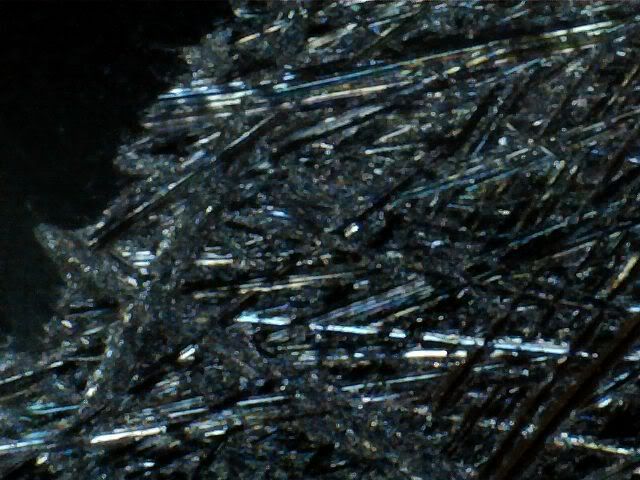
You may wonder how I held the knife in all of the pictures. In fact it is in the WEPS vice all the time. However, the microscope is round and I forgot where “up” is
. Then the 200 grit stone:
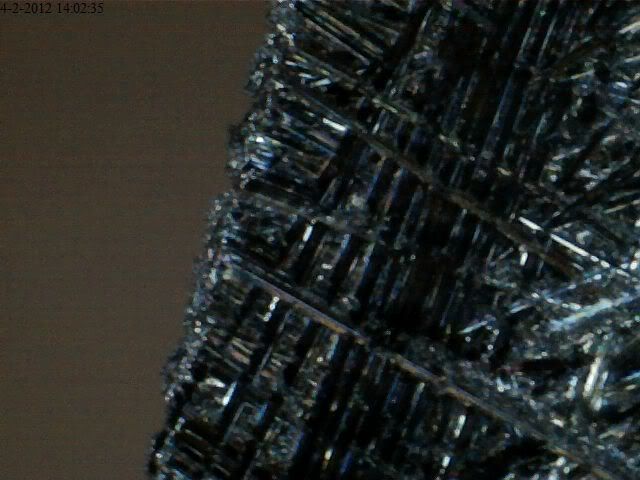
400 grit:

600 grit. Looking much better already:
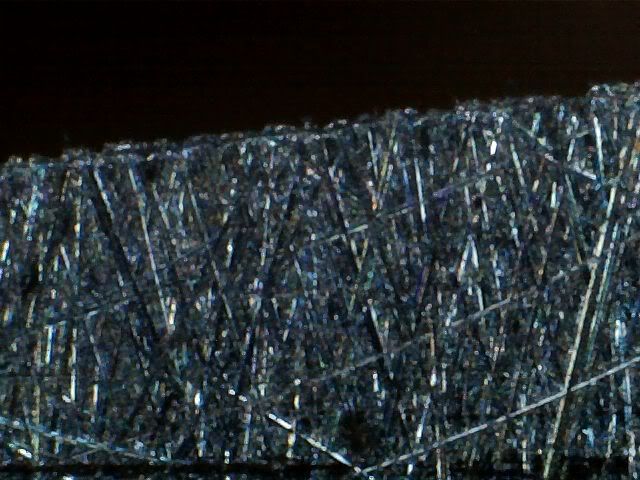
800 grit:
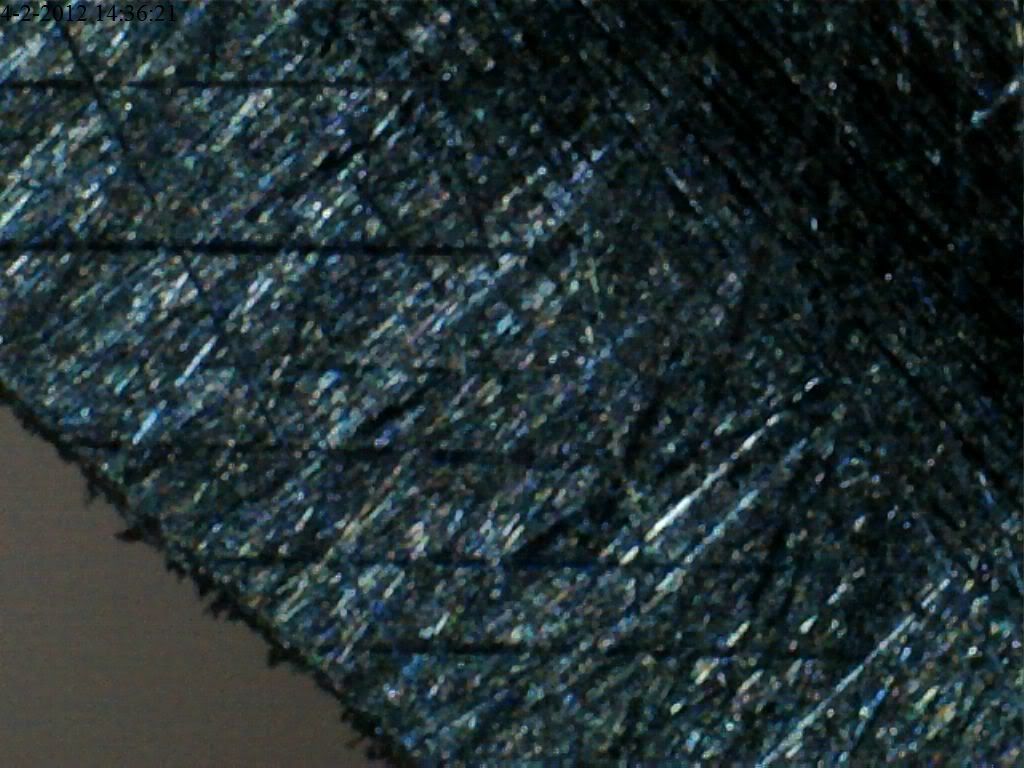
1000 grit. The edge is starting to look civilized:

1200 grit
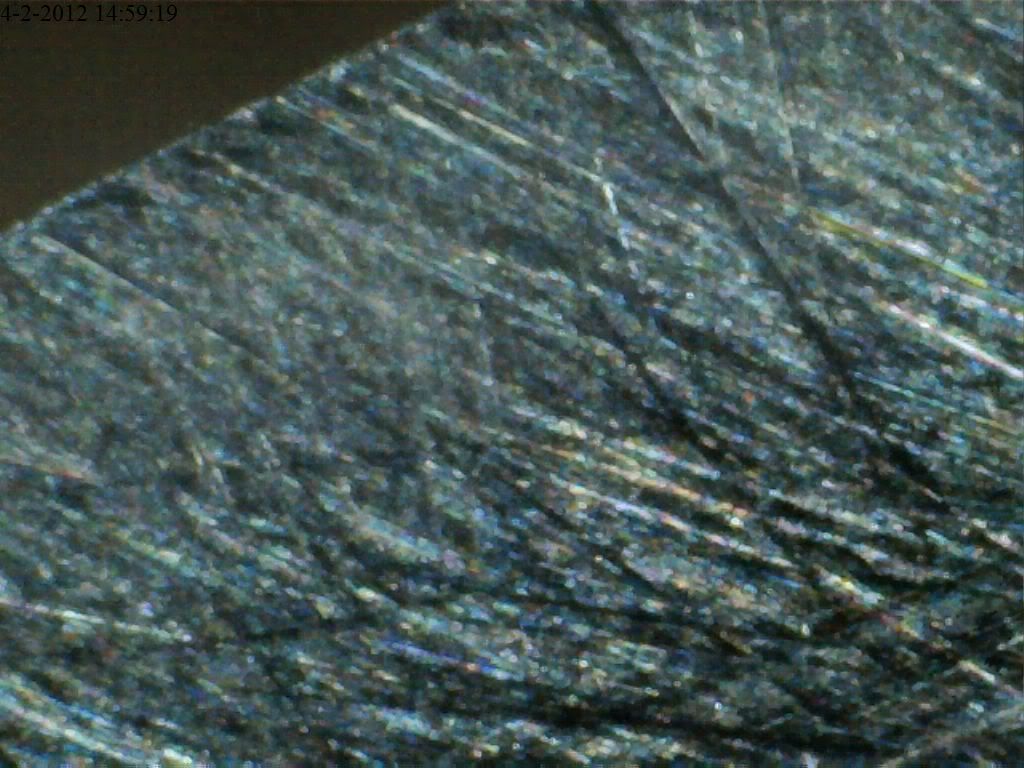
1600 grit. The final lowest angle bevel at 18 degrees.
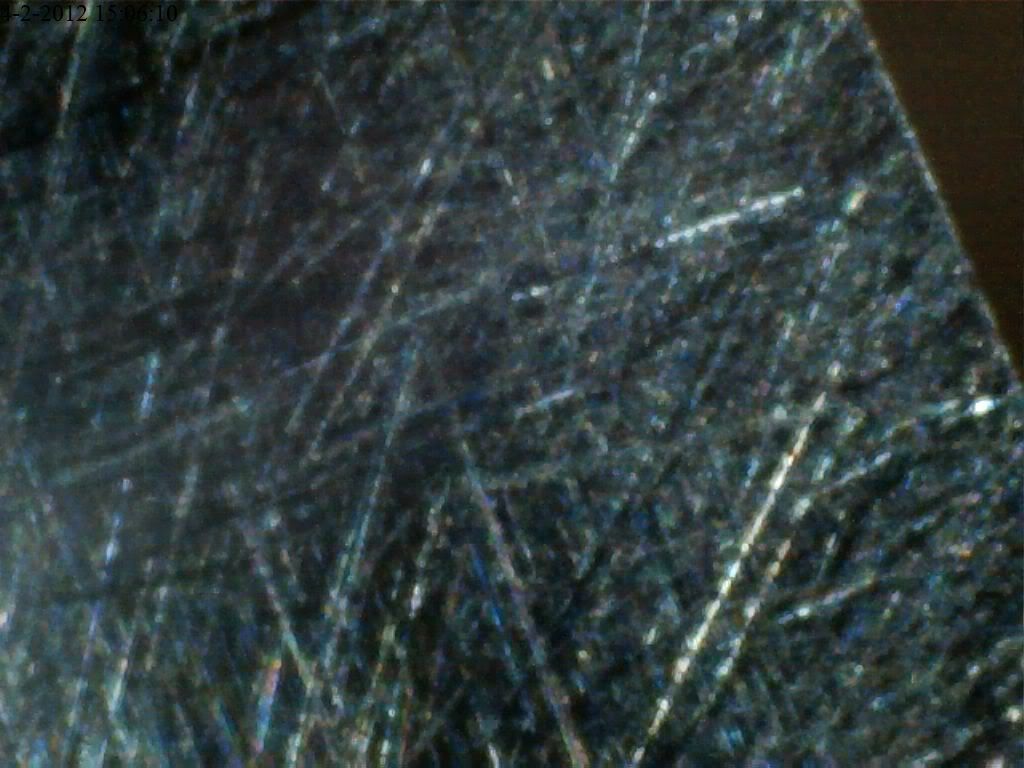
Then I added a second bevel at 21 degrees. At first I used a 1600 grit stone. However, when I saw no second bevel appear, I switched to 1200 grit before going to 1600 grit again. I probably shouldn’t have done this, since I removed slightly too much material:
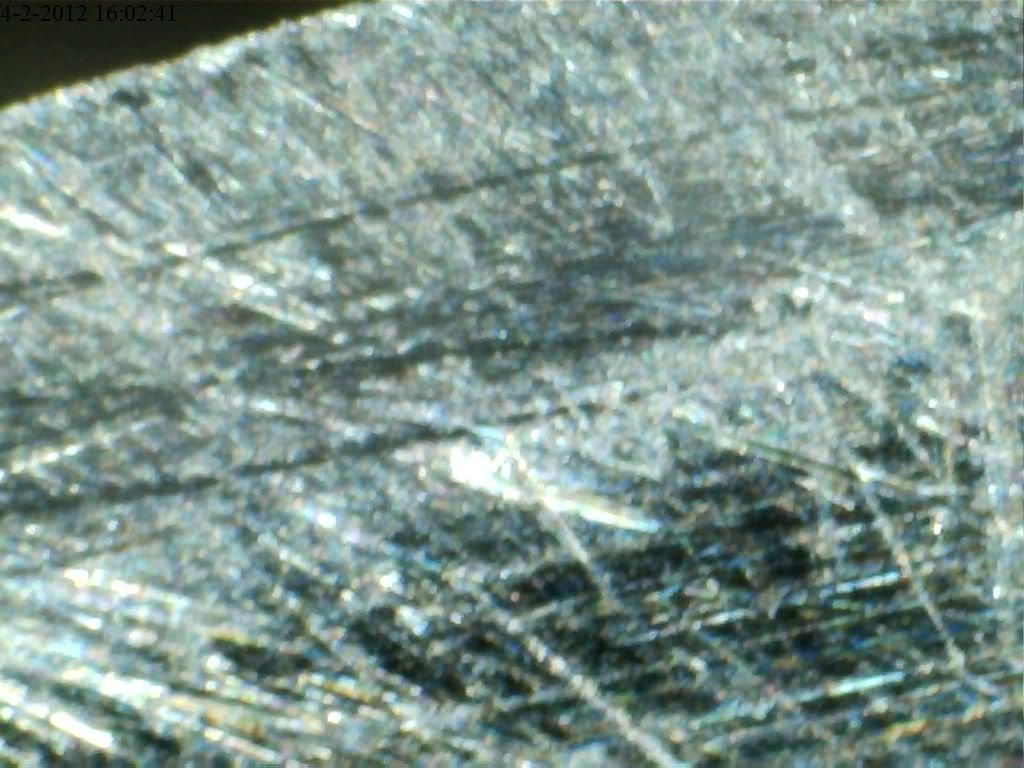
It is perhaps easier to see at a 20x magnification:

Then a third bevel at 20 degrees. I did about 50 light push movements per side of the blade with the 1600 grit stone:
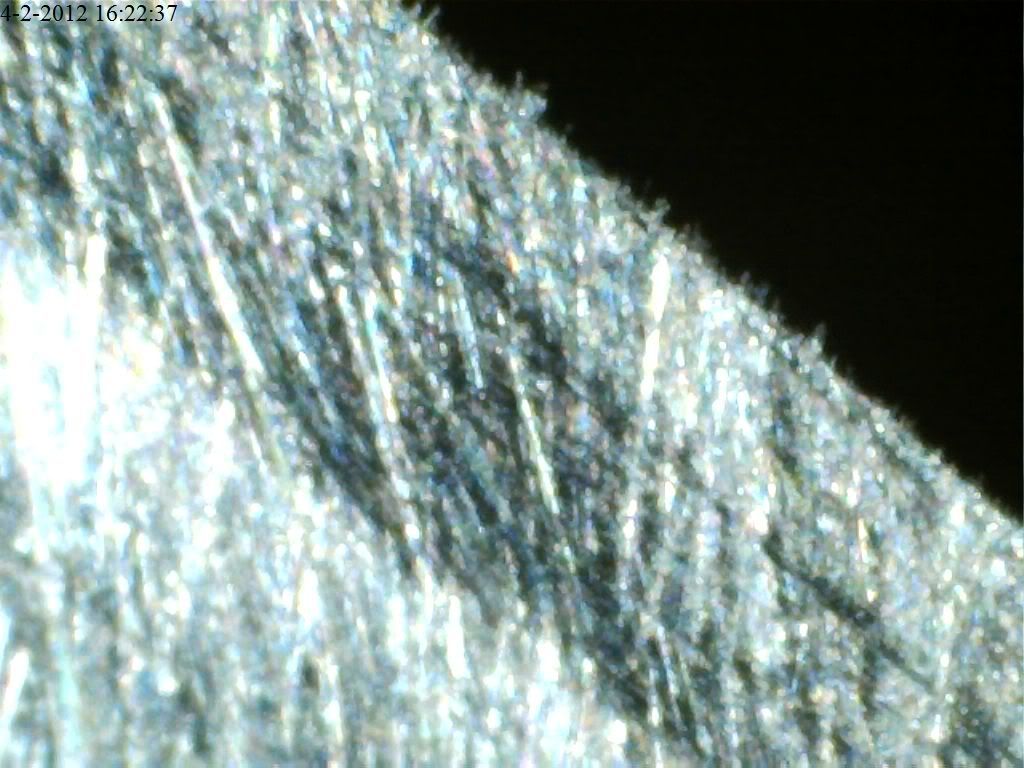
Finally a fourth bevel at 19 degrees. It was hard to make a photograph actually showing all four bevels, but with some effort you can see them:
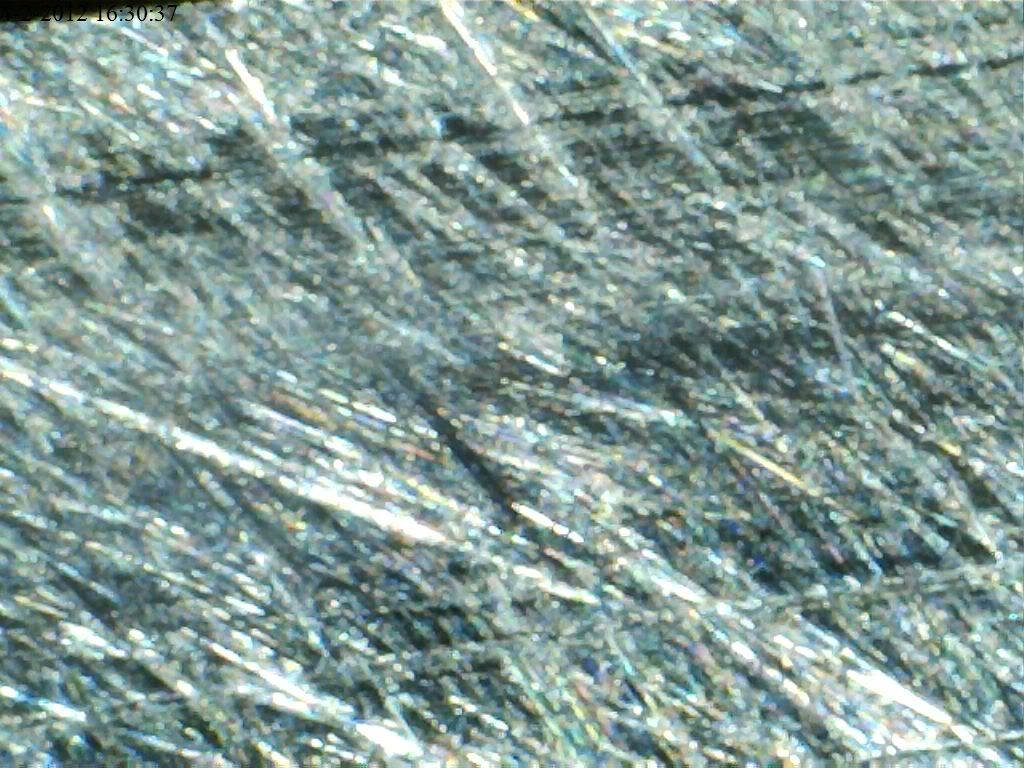
Then on to stropping. I first did about 50 passes per side of the blade at 19 degrees using 5 micron paste on a leather strop. Then I did 50 again at 20 degrees using 3.5 micron paste. The final result:
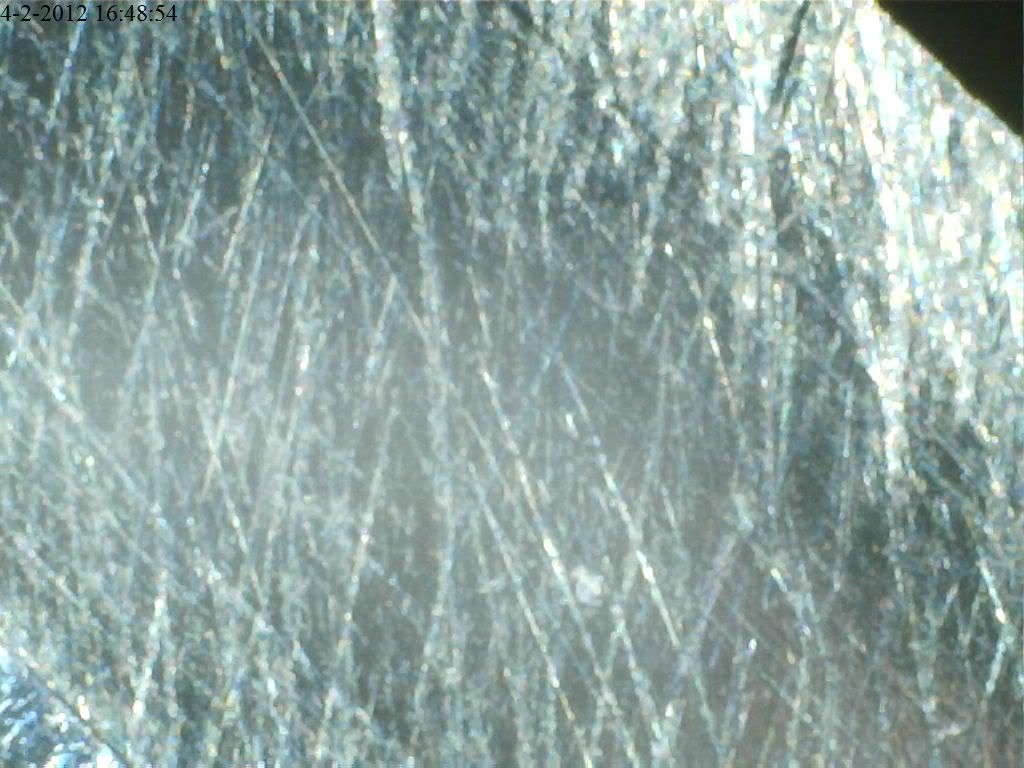
And I got very similar results with the two other methods.
‘there are many paths to enlightenment, so choose your own path and tread it boldly!’
I think either approach will work – from the lower angle up , or higher angle down.
Indeed
. And the proof of the pudding is in the eating.
Molecule Polishing: my blog about sharpening with the Wicked Edge
02/05/2012 at 5:37 am #1551Good stuff my friend! Excellent results yes? :woohoo:
Indeed there are many paths to enlightenment and you have shown some here. Well done mate!Leo
02/05/2012 at 9:54 am #1556Great job Mark.
Amazingly informative!02/19/2012 at 5:20 am #1688Finally it should be mentioned, that if you have any bevel edge and you frequently use a strop on it as I do a lot, you will gradually end up with a convex edge as the shoulders becomes rounded and the traditional bullet geometry is formed…it is like using a very slow sandpapering.
Cheers
Leo -
AuthorPosts
- You must be logged in to reply to this topic.

